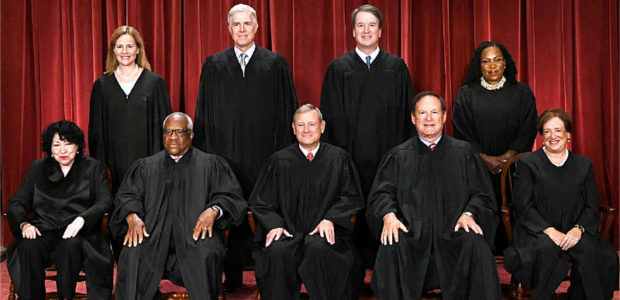


The Supreme Court today will hear arguments on whether Lousiana’s creation of a second majority-minority district, or gerrymandering, violates the Constitution. This is really all about the Voting Rights Act, which compelled the creation of this gerrymandered district.
You can watch it below. I’ve included the context of this case below the live streams.
This is a brief history of the case for context, via SCOTUSblog:
The dispute began back in 2022, when Louisiana’s Legislature adopted a congressional map with one majority-Black district out of the six seats allotted to the state, although roughly one-third of the state’s population is Black. A group of Black voters went to federal court, where they argued that the 2022 map violated Section 2 of the federal Voting Rights Act, which prohibits election practices that result in a denial or abridgement of the right to vote based on race.
A federal district court agreed with the Black voters that the 2022 map likely violated Section 2, barred the state from using the map for future congressional elections, and directed the state to draw a new plan with a second majority-Black district. The U.S. Court of Appeals for the 5th Circuit upheld that ruling.
In 2024, the Louisiana Legislature drew a new map, known as S.B. 8, that created a second majority-Black district. A different group of voters, who describe themselves as “non-African American,” contended that the 2024 map was an unconstitutional racial gerrymander – that is, that it impermissibly sorted voters based primarily on their race, in violation of the equal protection clause of the 14th Amendment. A three-judge district court agreed with them and barred the state from using the map in congressional elections.
The Supreme Court put the three-judge district court’s decision on hold in May 2024, allowing the state to use the 2024 map in that year’s elections. Voters in the newly drawn district elected Cleo Fields, who had represented a majority-Black district in Congress for two terms during the 1990s until the districts were redrawn, to represent them.
Louisiana and the Black voters who had challenged the 2022 map appealed the three-judge district court’s decision to the Supreme Court, which in November set the case for oral argument.
What was the original question before the justices?
The dispute initially focused on the 2024 map itself – specifically, whether the lower court was correct when it concluded that the second majority-Black district was an unconstitutional racial gerrymander.
What is the question before the Supreme Court on Wednesday?
On Aug. 1, the Supreme Court issued an order instructing the litigants to file new briefs addressing “whether the State’s intentional creation of a second majority-minority district violates” either the 14th Amendment, which bars the government from treating similarly situated people differently, or the 15th Amendment, which prohibits the government from denying or restricting voting rights based on race.
